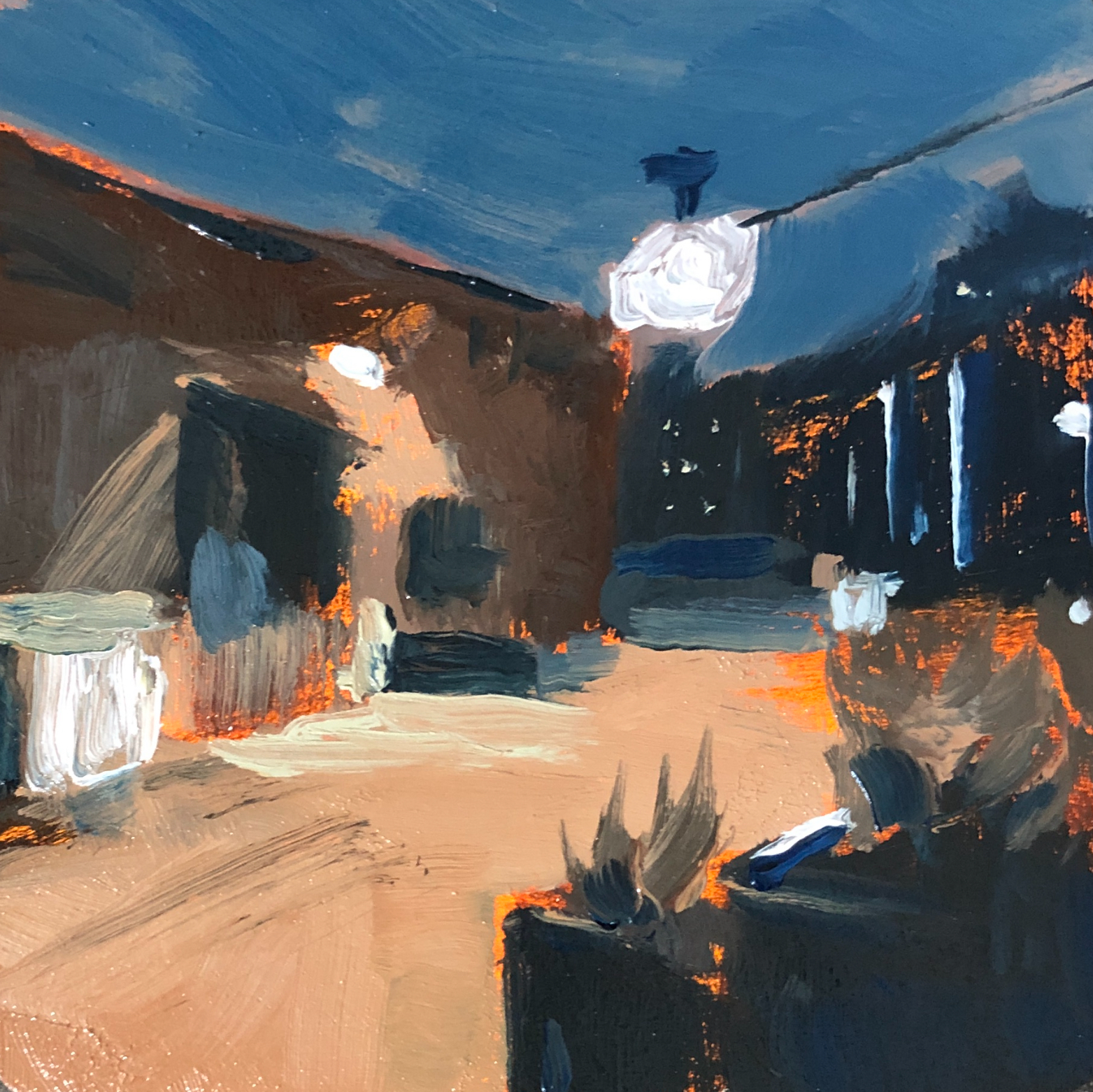Today we’ll discuss some examples of how to create value interchange and contrast in a painting and how it can make your work stand out.
Value interchange is essentially when two opposing values overlay each other. The effect is most prominent when strong lights and darks intersect. This can create a very pleasing composition and direct the eye of the viewer to your center of interest.
In landscapes this can happen in a number of ways. One common way is when a dark tree or building overlaps a much brighter sky. It can also happen when objects in the foreground overlap objects in the background.
As you can see in my painting below, the dark trees in the foreground/mid ground overlap with the much lighter sky in the background. This puts emphasis on the trees and draws in the eye of the viewer.

With this concept in mind, take a look at some paintings by some old masters and study how they used values next to each other. This is a great way to get ideas for compositions as well.
In the example below, I have exaggerated the value interchange and contrast from The Starry Night by Vincent Van Gogh.

You can see how the dark cypress trees overlap the lighter night sky and how the moon and stars pop out from the darker sky.
You can even try creating master copies. This is a great way to really lock a concept into memory.
Go to your local museum and create some NOTAN studies (black and white) or three value studies (black, white, and gray).
Below is a four value study I created in Procreate of Edward Hopper’s painting Sailing. As you can see, the contrast of the boat and the water immediately catches the eye of the viewer.

It also has a very simple value composition which makes for a very strong painting.
What techniques do you use to create contrast and interest in your paintings. Feel free to leave a comment or question below. I’d love to help you on your painting journey.
Stop back tomorrow (and every day) for more painting tips.
Stay inspired,
Bry

